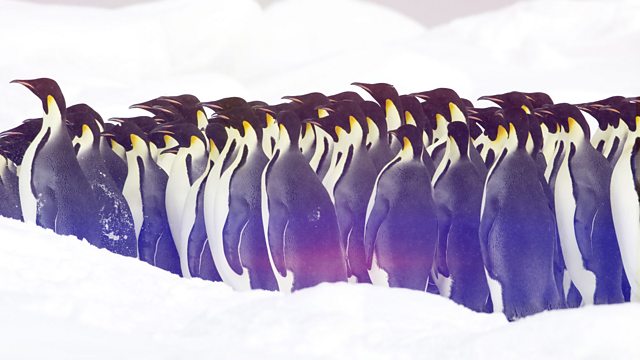The Wonder of Animals – Penguins: Chris Packham explores what makes animal groups successful. He looks at how the penguin’s legs, wings and body shape have allowed it to adapt to a range of environments.
At first sight, penguins seem ill-suited to their environment – rotund abdomens, stubby little legs and stiff wings appear to make the going tough. But in fact it is these very traits that enable this bird to thrive. Chris explores details of the penguin’s anatomy, using new scientific research to reveal how its legs, wings and body shape have allowed it to conquer an extraordinary range of habitats, from deep forests to tropical waters, bustling cities and even the toughest place on the planet – Antarctica.
Series in which Chris Packham uses groundbreaking science and brand-new behaviour to delve deep beneath the skin and discover the unique features that have made certain animal groups successful.
The Wonder of Animals – Penguins
Penguins are a group of aquatic flightless birds. They live almost exclusively in the Southern Hemisphere: only one species, the Galápagos penguin, is found north of the Equator. Highly adapted for life in the water, penguins have countershaded dark and white plumage and flippers for swimming. Most penguins feed on krill, fish, squid and other forms of sea life which they catch with their bills and swallow it whole while swimming. A penguin has a spiny tongue and powerful jaws to grip slippery prey. They spend roughly half of their lives on land and the other half in the sea.
The largest living species is the Emperor penguin (Aptenodytes forsteri): on average, adults are about 1.1 m (3 ft 7 in) tall and weigh 35 kg (77 lb). The smallest penguin species is the little blue penguin (Eudyptula minor), also known as the fairy penguin, which stands around 33 cm (13 in) tall and weighs 1 kg (2.2 lb). Today, larger penguins generally inhabit colder regions, and smaller penguins inhabit regions with temperate or tropical climates. Some prehistoric penguin species were enormous: as tall or heavy as an adult human. There was a great diversity of species in subantarctic regions, and at least one giant species in a region around 2,000 km south of the equator 35 mya, in a climate decidedly warmer than today.
Chris Packham
Christopher Gary “Chris” Packham is an English naturalist, nature photographer, television presenter, and author, best known for his television work, including the children’s nature series The Really Wild Show from 1986 to 1995. He has presented the BBC nature series Springwatch since 2009.
Packham was educated at Bitterne Park Secondary School, Taunton’s College, and the University of Southampton, where he received a BSc in Zoology. After graduating, he canceled his study towards a Ph.D. to train as a wildlife cameraman. He formed the production company Head Over Heels with producer Stuart Woodman, making wildlife programmes for Discovery Channel, National Geographic, and the BBC. He is the brother of fashion designer Jenny Packham. He lives in the New Forest with his girlfriend, Charlotte Corney, owner of Isle of Wight Zoo, and his two pet poodles, Itchy and Scratchy.




